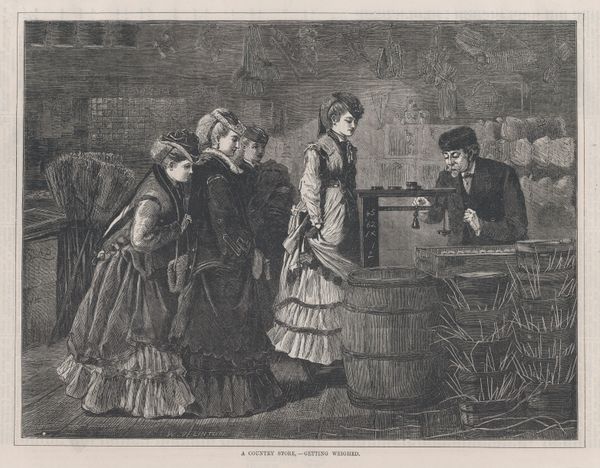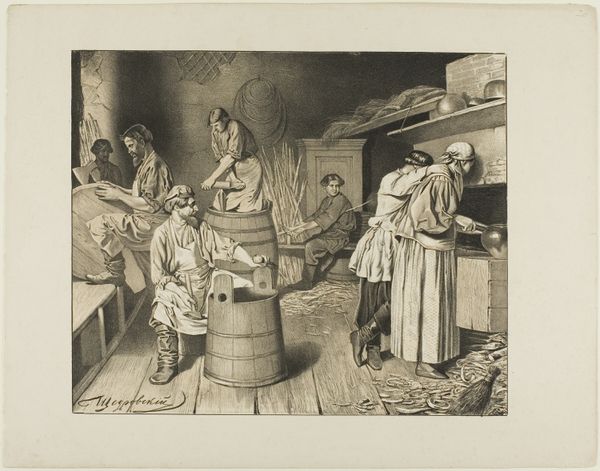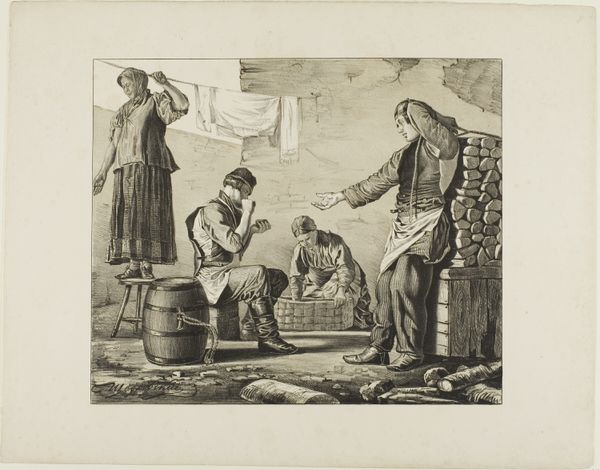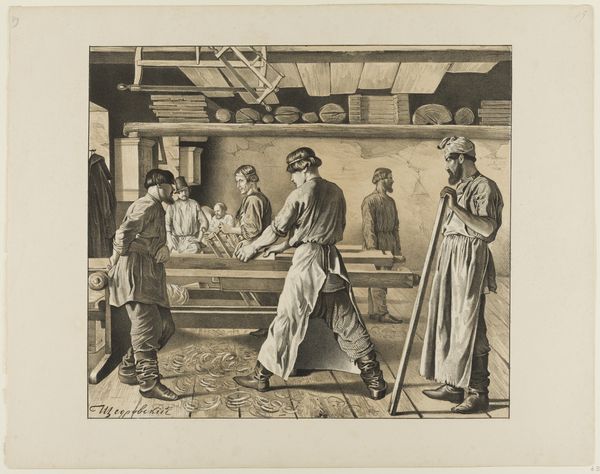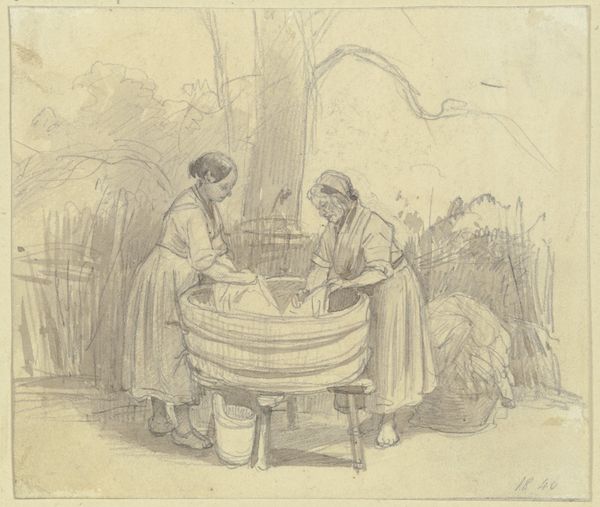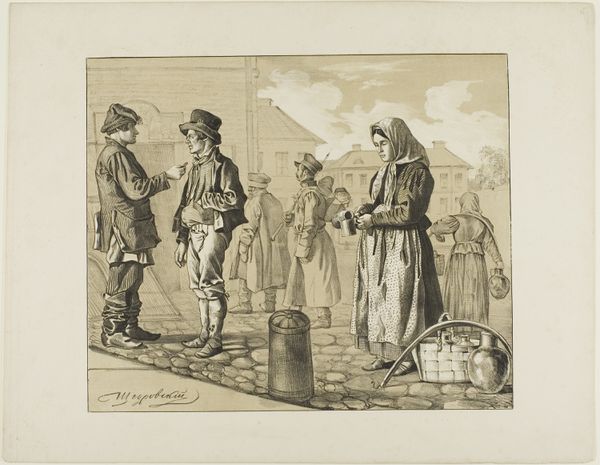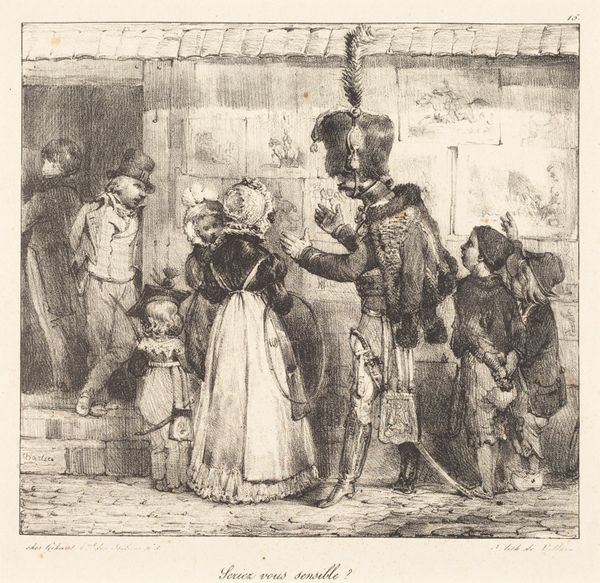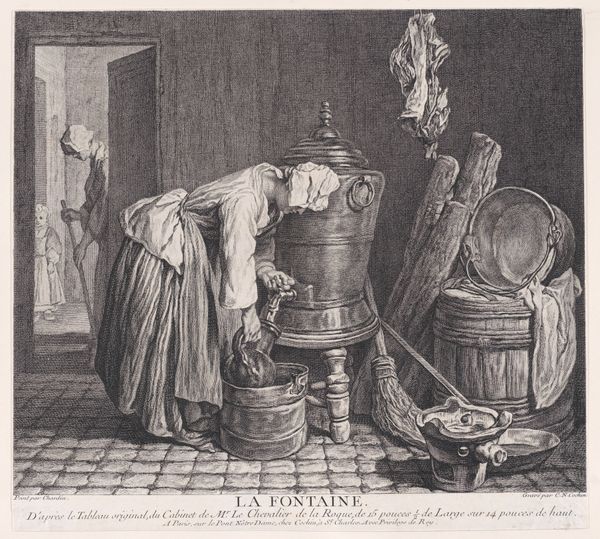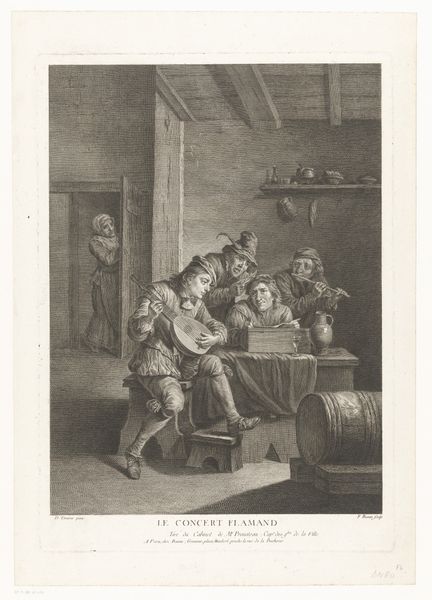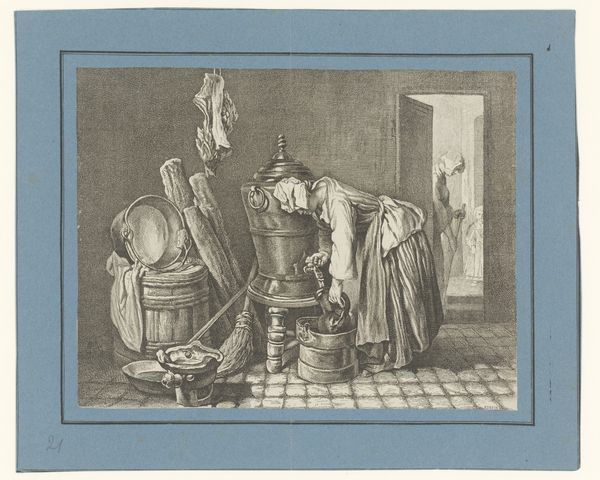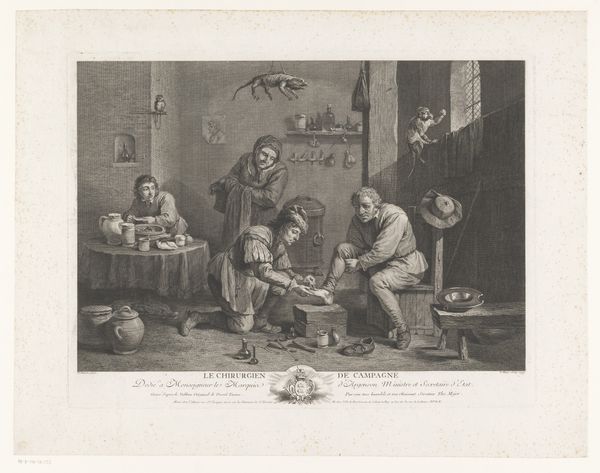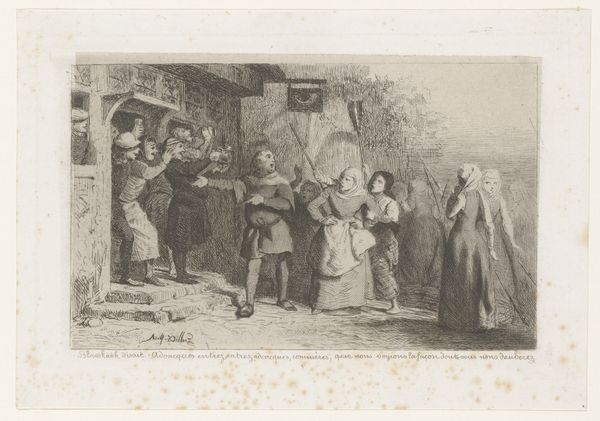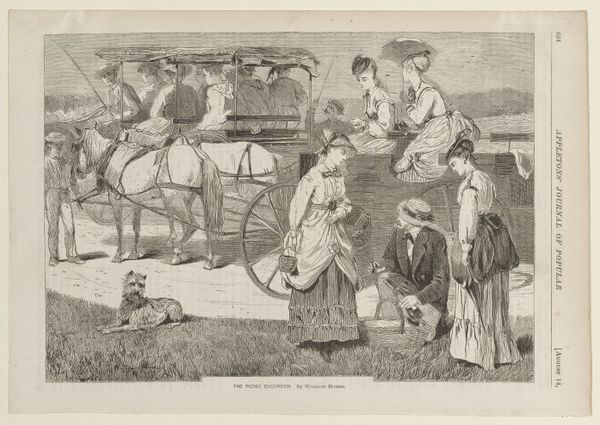
print, woodcut, wood-engraving
#
portrait
#
16_19th-century
# print
#
woodcut
#
19th century
#
united-states
#
genre-painting
#
wood-engraving
#
watercolor
#
realism
Dimensions: 8 13/16 x 11 11/16 in. (22.38 x 29.69 cm) (image)10 5/8 x 14 7/8 in. (26.99 x 37.78 cm) (sheet)
Copyright: Public Domain
Curator: "A Country Store - Getting Weighed," a wood engraving by Winslow Homer from 1871. I’m struck by how this print seems to capture a moment of everyday life. What do you think is going on in this print? Editor: It seems like a snapshot of women in a store, possibly getting weighed. The print's detailed lines give a sense of the textures of their clothing and the merchandise. As a Materialist, what particularly grabs your attention in this work? Curator: As a materialist, I look beyond the simple depiction and consider the means of production. This isn't just an image of leisure, it is an object created with specific tools through industrial processes to create multiple, affordable, images. The wood engraving, the ink, the paper; these materials speak of a developing industrial era in America, aimed at circulating scenes and ideas more widely, connecting consumer culture to gender and class distinctions through affordable commodity circulation. Think about how many hands were involved in just creating this print—from lumberjacks providing the wood, to artisans actually etching the design. How does the material nature of this image influence your understanding of it? Editor: That's a really interesting perspective. I hadn't thought about the lumberjacks or the etchers; I guess I saw it as simply an image, without reflecting on the labor and materials behind its creation. Do you think the mass production of this print influenced how these women and their consumer practices were perceived at the time? Curator: Absolutely! The ability to mass produce images like this contributed to constructing and circulating certain social expectations, for example, relating to feminine roles. These depictions shaped and reinforced how individuals perceived their places within society, and contributed to the demand for particular goods or ways of living. And prints like these weren't just about recording reality; they were actively shaping it by setting benchmarks of beauty and consumer desire within a quickly changing social landscape. It really prompts you to think about the manufacturing of gender through imagery, doesn't it? Editor: Definitely! Looking at art through this material lens offers a much deeper understanding. I’ll be sure to keep that in mind moving forward! Curator: Glad I could shed a new light, remember that artistic expression is always interwoven with society!
Comments
No comments
Be the first to comment and join the conversation on the ultimate creative platform.
